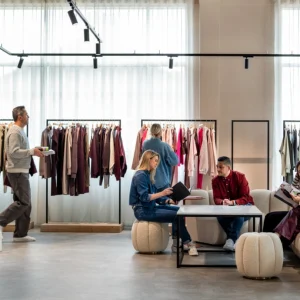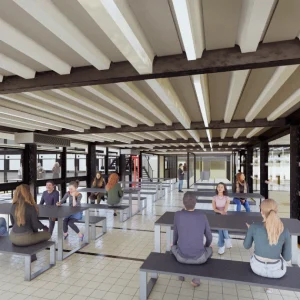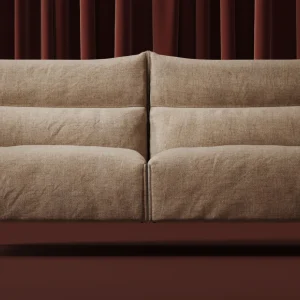
After 18 months of construction, during which it has gradually opened in sections, the Bethnal Green Town Hall Hotel is due to open its doors offically in November. With all of its 98 rooms finished exactly 100 years after the town hall itself was built, this marks another phase in the life of a handsome civic building.
The restoration of the town hall, and its bold extension have been carried out under the design team of Michel da Costa Gonçalves and Nathalie Rozencwajg, the founders of Rare Architecture. The young practice, based in London and Paris, has completed a project that combines careful restoration and computer-led parametric design.
The original Edwardian town hall on Cambridge Heath Road was considerably extended in 1937 onto Patriot Square, where the entrance to the new hotel can now be found. Through the years, the 7,500sqm building housed the area’s municipal administration, and underwent numerous modifications until it eventually fell out of use and was vacated in 1993. For 14 years the former town hall was only used as a location for television and films – including Atonement and Lock, Stock and Two Smoking Barrels – until it was bought by Singaporean hotel magnate Peng Loh.

The hotelier was previously notable for canny investment in designer hotels in his native city state, including the New Majestic and 1929. In this case, while the town hall is located in a fairly rundown part of east London, Peng realised that its proximity to the City of London, and the developments underway for the Olympics site in Stratford, made for a convincing business case.

The extension to the building consists of a new wing that stands behind the original 1910 structure and an additional floor that sits atop the flat roof of the 1937 extension, providing an extra 1,500sqm of accommodation. Wrapped entirely in a laser-cut, powder-coated aluminium skin, none of its windows or doors are externally visible. This creates a bold, angular form, which is nevertheless nearly invisible from Cambridge Heath Road.

The pattern cut into the skin was taken from a pattern book Rare developed for the project, taking inspiration from an original art deco feature in the town hall’s Council Chamber. The resultant motif is apparent not only in the aluminium skin but also in many of Rare’s interventions in the hotel’s interior, from radiator and air-conditioning covers to decorative wall panels. The skin allows natural light into the rooms behind it, while also preserving privacy.

The faceted form of the extension’s skin and roof was dictated by daylight and views that had to be maintained for neighbouring buildings. The practice’s interest in parametric design was perfect for a project where English Heritage was concerned with the effect of a new extension to a historic building – it was able to remodel the structure repeatedly until it provided the interior space and light required.

Inside, the dimensions of each of the 98 rooms are different. Rare performed an entire internal re-planning of the space in the building. In addition to the residential accommodation Rare has provided a 14m titanium-tiled pool in the basement, restored the Conference Room and Mayor’s Room for functions, and designed a separate bar and restaurant in the Edwardian wing of the building.

Digitally crafted, textured wall panels are used throughout the building’s interior. Produced using a CNC milling system, the design echoes the ornamental art deco pattern that Rare found on the original radiator grille. Cut into MDF, the depth and detail of the patterning were partly dictated by the available time for the milling process. This was one of the key variables fed into the practice’s parametric design process.

Given the extensive use of computer modelling, it is, perhaps, no surprise that Costa Gonçalves and Rozencwajg are now using the project as a teaching case study at the AA. The paneling also formed part of the furniture range Rare showed during the London Design Festival.






